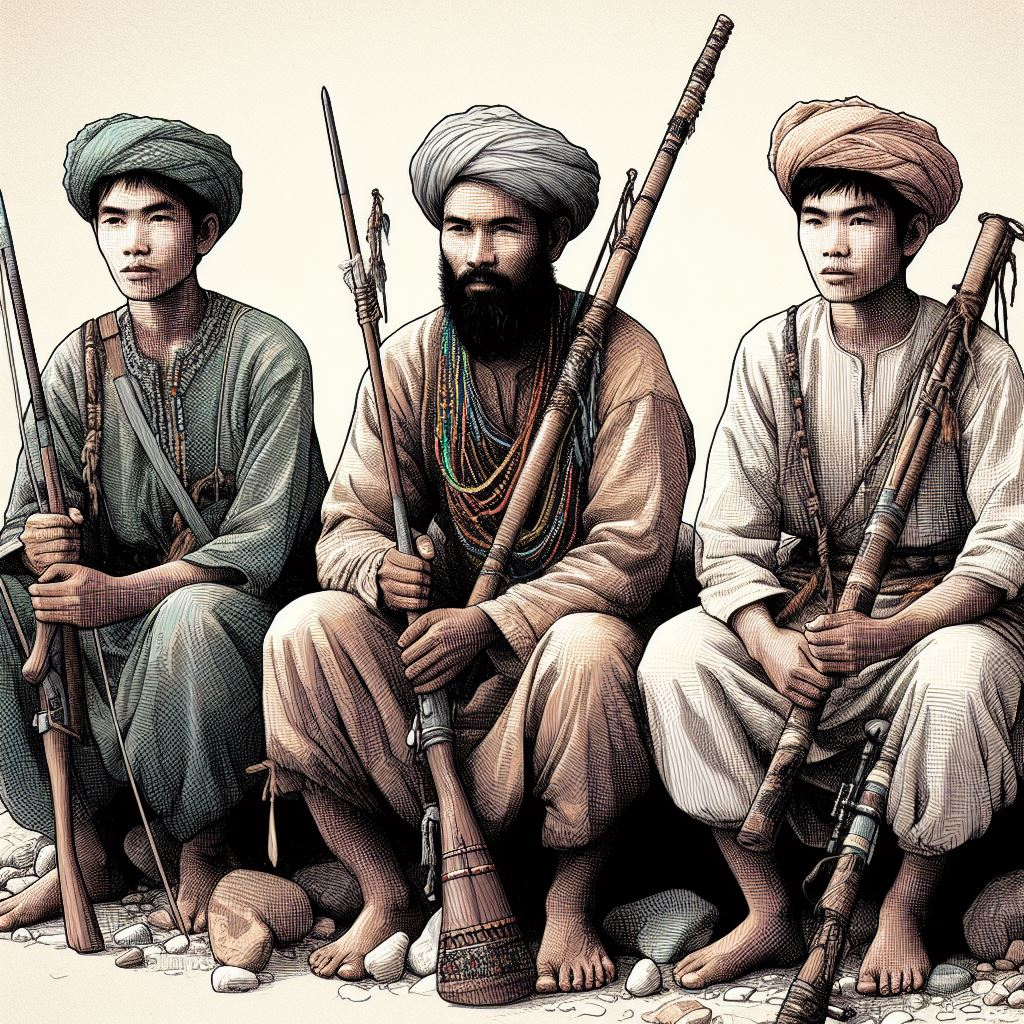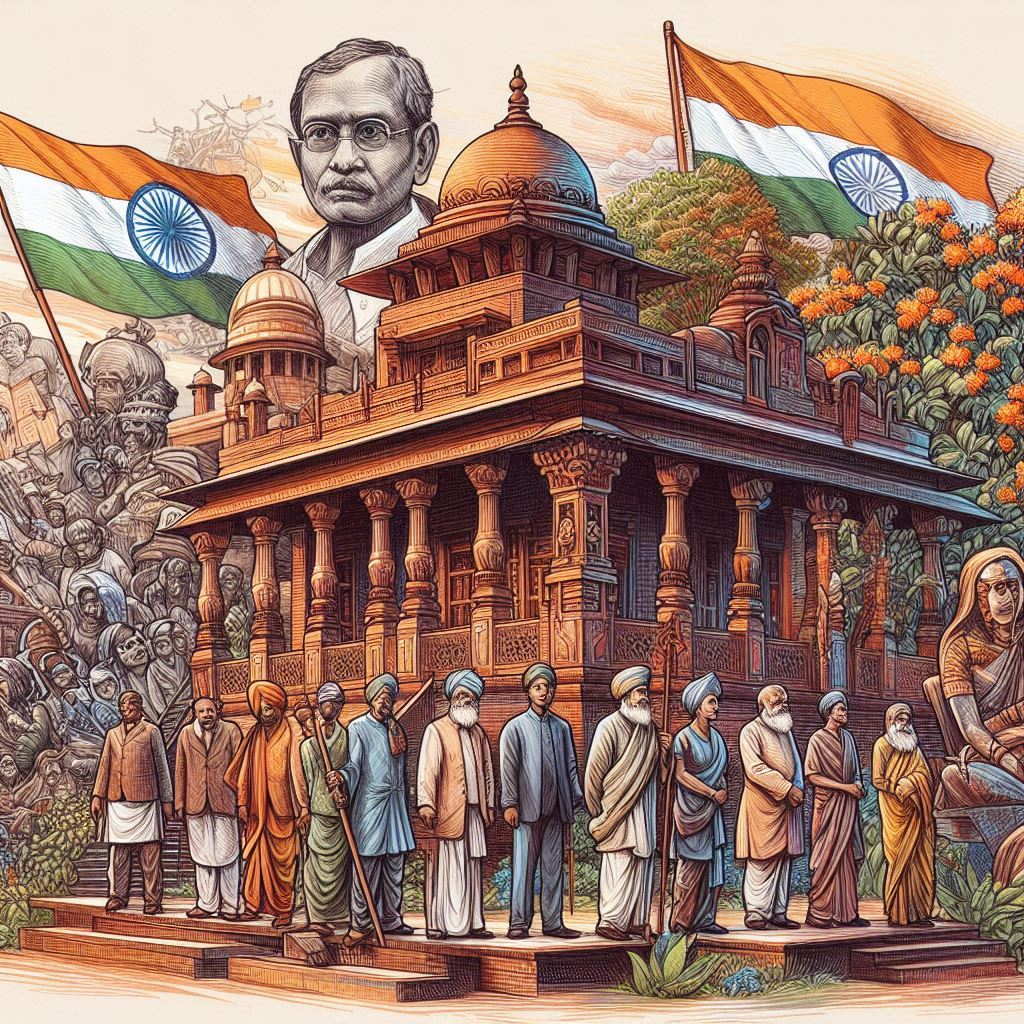Introduction
In the mid‑1960s, as independent India was grappling with deep-seated agrarian inequalities and the incomplete promise of postcolonial land reforms, a radical new form of peasant mobilization emerged in a small village in North Bengal. The Naxalbari movement of 1967–71 signified not only a spontaneous reaction against exploitative agrarian practices but also a turning point that would inspire a pan‑Indian insurgency. Drawing on the ideas of Mao Zedong and the unresolved socio‑economic tensions of rural India, the uprising marked the beginning of a militant, armed struggle that challenged both feudal structures and the political establishment.

Historical Background: Agrarian Crisis and Unfulfilled Reforms
Legacy of Colonial Agrarian Policies
After India’s independence, the state inherited a deeply unequal agrarian structure shaped by colonial policies. Early land reforms—the West Bengal Estate Acquisition Act (1953) and the West Bengal Land Reform Act (1955)—were designed to abolish the zamindari system, impose ceilings on landholdings, and reserve a fair share for sharecroppers. In theory, these measures would have empowered rural laborers and reduced exploitation. In practice, however, the lack of political will and administrative inertia rendered many of the progressive provisions ineffective. As a result, sharecroppers declined drastically—from 16% of rural households in 1952–53 to a mere 2.9% by 1961–62—while the proportion of landless agricultural laborers surged (Census of India 1961, 1971). This transformation not only highlighted the deep polarization between rich and poor but also set the stage for mass peasant discontent.
Economic Insecurity and Social Dislocation
The agrarian economy of the time was marked by:
- Evictions and Downward Mobility: With persistent land transfers and evictions by powerful landlords, many peasants faced not only economic insecurity but also a loss of social status.
- Rising Labor Dependency: The sharecropping system’s collapse coincided with an increase in agricultural laborers—from 15.3% in 1961 to 26.2% in 1971—reflecting a society where rural survival increasingly depended on precarious, wage-based work.
- Polarization of Classes: The All India Credit Committee’s 1968 report explicitly noted a sharp polarization in rural areas, with a widening gap between a small class of affluent landowners and a vast majority of economically insecure peasants.
These structural imbalances provided fertile ground for an agrarian revolt, as millions of landless and marginalized workers yearned for not only justice but a radical transformation of society.
Political Catalyst: The United Front Government and Peasant Mobilization
A Shift in Political Dynamics
In February 1967, a United Front government came to power in West Bengal. Dominated by left‑leaning parties—including factions of the Communist Party of India (CPI) and the Communist Party of India (Marxist) (CPI‑M)—the new administration promised “land to the tiller” and “proletarian rule.” This political shift emboldened the peasantry and left a lasting impression on the rural masses. While the government’s promises indicated a genuine desire to implement land reforms, the slow pace and bureaucratic delays deepened peasant frustration.
Militant Mobilization in Naxalbari
In the early 1960s, long before the formal uprising, local left‑wing groups had begun to organize the peasants in the Naxalbari region. The CPI‑M Darjeeling district committee, for instance, initiated a militant mobilization drive in response to large‑scale evictions and the harsh realities of rural life. When the United Front government assumed power, its conciliatory promises and tepid implementation of land reforms inadvertently accelerated these militant tendencies.
Peasants in Naxalbari, already agitated by years of exploitation, began to assert their rights forcefully. They formed peasant committees, seized land from absentee landlords, and even burned official records to nullify debts and illegal claims. The rapid escalation of violence culminated on May 25, 1967, when police retaliation—intended to restore order—resulted in the killing of several villagers, including women and children. This tragic incident crystallized the resolve of the marginalized to pursue a path of armed struggle.
The Uprising and Its Ideological Dimensions
From Peasant Revolt to Revolutionary Insurgency
The Naxalbari uprising was more than a spontaneous outburst—it was an organized revolt driven by both economic desperation and radical ideology. Inspired by Mao Zedong’s vision of a peasant-led revolution and drawing on the “Historic Eight Documents” penned by figures such as Charu Majumdar, the movement quickly transcended local grievances. Within months, what began as localized armed resistance in North Bengal spread rapidly, igniting similar uprisings in other parts of India.
Schism within the Communist Movement
The rapid escalation of militancy and the use of armed struggle posed a challenge to the established left‑wing parties. By June 1967, senior CPI‑M leaders denounced the Naxalbari rebels as an “organized anti‑party group” advocating adventurism. This internal conflict led to the expulsion of nineteen radical members from the CPI‑M. The schism eventually paved the way for the formation of the Communist Party of India (Marxist–Leninist) (CPI‑ML) in May 1969, as organized militant groups sought to consolidate their revolutionary agenda outside the constraints of parliamentary politics (Chatterjee 1998).
Ideological Resonance and Legacy
For many young intellectuals and rural workers, Naxalbari became a symbol of resistance against an unjust system. The movement’s rallying cry—to overthrow the oppressive feudal structures and redistribute land in favor of the landless—resonated deeply in a society marred by chronic exploitation. Although the initial uprising was ultimately suppressed by state forces and internal fissures, its ideological legacy continued to influence later generations of Naxalites and left‑wing insurgents. The Naxalite movement would evolve over the decades, morphing into a broader armed insurgency known as the Naxalite–Maoist insurgency, which has since become one of India’s most enduring internal security challenges.
Aftermath and Impact
Repression and Political Realignment
In the wake of the uprising, the state’s response was swift and severe. The government mobilized police and paramilitary forces to crush the rebellion. Notable operations, such as the 1972 crackdown that led to the arrest and subsequent death of Charu Majumdar in police custody, signaled the state’s determination to restore order. Despite these efforts, however, the movement’s impact was far-reaching:
- Fragmentation of the Movement: The initial unified struggle splintered into multiple factions, with each group adopting its own interpretation of revolutionary strategy.
- Long-Term Political Influence: Even as the rebellion was suppressed, the Naxalbari uprising catalyzed a broader debate on land reforms, rural justice, and the rights of the marginalized—a discourse that would shape Indian politics for decades.
- Inspiration for Future Uprisings: The movement inspired similar peasant and tribal rebellions in other regions, ultimately laying the ideological and organizational groundwork for the subsequent Naxalite–Maoist insurgency.
Scholarly Perspectives on the Peasant Revolt
Works such as Arun Mukherjee’s Maoist “Spring Thunder”: The Naxalite Movement 1967–1972 have provided valuable primary accounts and analytical frameworks to understand the uprising. Similarly, research by scholars like D.N. Dhanagare and Sunil Sen on peasant movements in India has underscored the historical continuity between earlier struggles—such as the Tebhaga movement—and the radicalism witnessed in Naxalbari. These studies reveal that the Naxalbari uprising was both a continuation of long‑standing peasant discontent and a radical departure from conventional forms of protest, as it embraced armed resistance as a tool for socio‑political transformation.
Conclusion
The Naxalbari movement remains a landmark episode in the history of peasant revolts in India. Born out of an acute economic crisis and exacerbated by the failure of post‑independence land reforms, the uprising not only reflected the plight of millions of dispossessed peasants but also signaled the emergence of a new, militant political consciousness. Despite the eventual suppression and fragmentation of the movement, the legacy of Naxalbari continues to inspire debates about social justice, state power, and the possibilities of grassroots mobilization in modern India. In examining the complex interplay between economic insecurity, political promises, and radical ideology, the story of Naxalbari offers enduring lessons on the challenges of achieving genuine agrarian reform in a stratified society.


